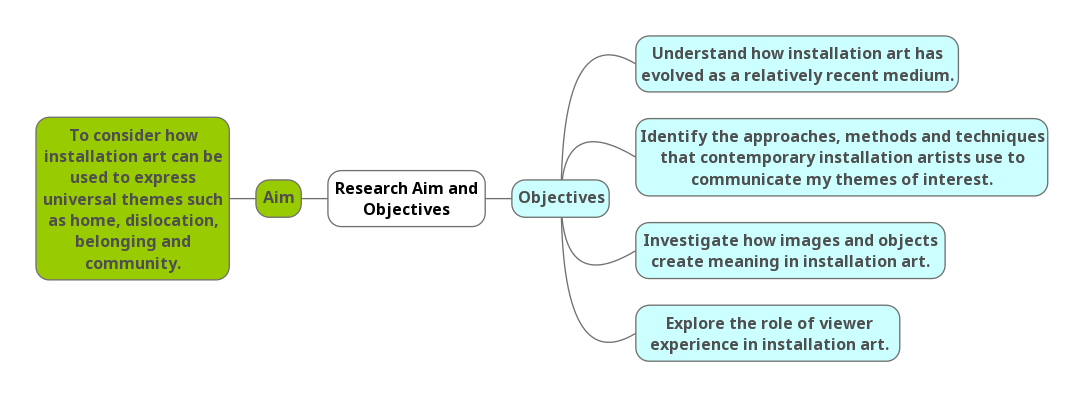As ideas emerge for my research aim, it's been helpful to keep the scaffolding simple about methods I can use to test and model ideas:
Themes/Message > Materials > Form + Structure > Models + Tests
Aim + objectives, v.3
This mind map looks fairly rational and intellectual, but there's a lot of meaning embedded in the thinking.
After a trip to the US to visit family for the first time since losing my father this Spring, I returned to the UK imbued with wanting to work with this loss. I returned with a suitcase full of the materials of Dad's work (he owned a telecommunications installation company). They now inhabit my school studio - wire, cable, zip ties, tiny metal and plastic connectors and fixtures of his trade.
As soon as I could work as a teen up through my undergraduate summers, I worked for my father, shoulder to shoulder pulling cable, punching down wires in the telephone room, making intricate cable connectors with special equipment. Dad taught me hand skills and how to work with a wide range of high-tech, piece-y materials.
Research methods, v.1
Now I find myself wanting to use these materials, or at least the suggestion of them. How can I use them in a manner that feels warm, connected, human, vulnerable and organic? Eva Hesse's work comes to mind—she used industrial materials (rubber, fiberglass, resin, wire) that were imbued with organic vulnerability when I saw them in person in 2013 at the Hamburger Kunsthalle. In contrast is Tara Donovan's work—brilliant but rather otherworldly and intellectual —that dazzled but didn't move me when I saw her installation at the Smithsonian's Renwick Gallery in 2016.
How might an installation, its materials, its form, and flow create belonging? community? connection? disconnection? crossed wires? mixed signals? confusion? being found? feeling lost? These are the small tests and models I'm leaning toward for next term, and am beginning to sketch ideas for now.
References
Eva Hesse. One More Than One (2013) Hamburger Kunsthalle, Hamburg, Germany. 29 November 2013—2 March 2014.
Wonder (2016) Renwick Gallery, Washington, DC. 13 November 2015—10 July 2016.








